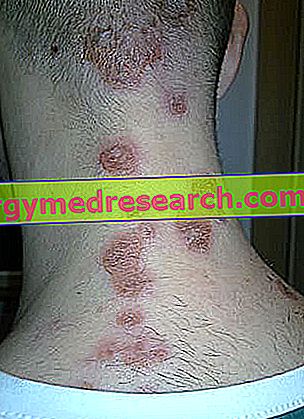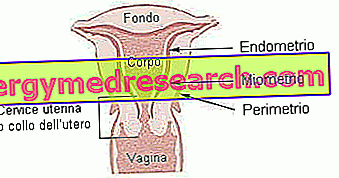Definition of impetigo
Impetigo is an acute, highly contagious bacterial infection that affects the skin, generating serous blisters which later burst into golden crusts.

Causes
Staphylococcus aureus and Streptococcus pyogenes (S. beta-hemolytic group A, also known as SBEGA) are gram-positive bacteria that play a fundamental role in the manifestation of impetigo.
Impetigo appears with greater frequency during the summer, an indication of the fact that bacterial proliferation is favored by a hot and humid climate.
Other risk factors, which greatly affect the appearance of impetigo, are crowding and poor hygiene, peculiar to childhood.
Skin lesions
Impetigo begins with typical serous bubbles on the skin, associated with erythema and vesicles that spread on the face (in particular, they affect the nose and chin in the first place) and near the navel (in the newborn): the bubbles, during the very first stages of the disease, appear almost clear, to then gradually dull, up to burst and evolve into real abrasions and yellow or white-brownish crusts, very similar to cigarette burns. [taken from Manual of medical dermatology, by Paolo Fabbri, Carlo Gelmetti, Giorgio Leigheb].
The bubbles and yellowish crusts, being highly contagious, spread rapidly, infecting the surrounding areas: when impetigo is not promptly treated, it can even degenerate into regional lymphadenopathy.
Symptoms
To learn more: Symptoms Impetigo
The bubbles and vesicles formed are highly itchy: the child is not able to self-control, so he tends to scratch and scratch himself continuously, worsening the pre-existing situation: the injuries, in fact, due to the scratching and continuous rubbing, favor the infection in the surrounding areas. In fact, we speak of contagious impetigo .
Often the impetigo is mistaken for the disease caused by Herpes: in the latter case, however, unlike the impetigo, the infection is generated by a virus, spreads very slowly, infects above all mouth and generally remains confined to a particular area.
Complications
The severe forms of impetigo can give rise to much more serious pathologies: when the skin disease is not recognized in a timely manner, Group A Hemolytic Beta Streptococcus (SBEGA) could generate renal complications (streptococcal glomerulus-nephritis): the affected child presents a noticeable swelling in the legs and face, complains of headache and nausea, and the urinary volume is decidedly paltry.
The formation of very itchy and pus-filled ulcers could degenerate into ectima, a form of impetigo caused by ulceration: when left untreated from the earliest manifestations, impetigo can penetrate deeply through the skin and cause cicatricial lesions associated with permanent alterations of the skin pigmentation.
Still, an underestimated impetigo, neglected or not diagnosed correctly, can worsen in satellite lymphadenitis, which manifests itself with an inflammation of the lymph nodes.
Another complication of impetigo is the SSSS ( Staphylococcal Scalded Skin Syndrome ) also called Ritter's disease: the skin infected with staphylococci has pustules, blisters and diffuse erythema, while the subject has slight thermal alteration (low-grade fever) or high fever. The disease must be treated immediately.
therapies
To learn more: Medicines for the treatment of impetigo
To treat impetigo, a doctor's check is essential. Generally, they are prescribed:
- Antiseptics (disinfectants such as, for example, chlorhexidine gluconate): topical compresses with disinfectant substances are useful for cleaning the infected area, which is essential for removing scabs.
- Antibiotics: for example topical retapamulin, penicillin and erythromycin (macrolide).
Obviously, the choice of an antibiotic rather than another is subject to the cause that caused the impetigo.
Summary
| pathology | Impetigo |
| Description | Acute bacterial infection, highly contagious, affecting the skin: it generates serous bubbles that burst forming golden crusts |
| Aetiology | Staphylococcus aureus and Streptococcus pyogenes (group A beta-hemolytic) |
| Risk factors for impetigo | Bacterial proliferation is favored by:
|
| Diagnostic framework of impetigo |
|
| Impetigo symptomatology | Itching, redness, itching extension in surrounding areas |
| Complications of impetigo |
|
| Therapeutic strategies to cure impetigo | Antiseptics, antibiotics (penicillin, erythromycin, retapamulin) |



